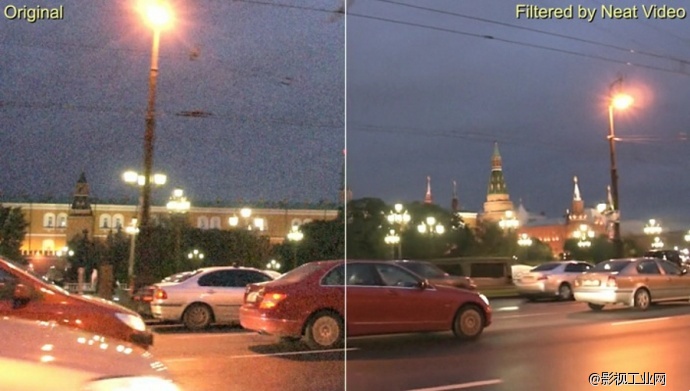

- #Neat video vs denoiser ii full#
- #Neat video vs denoiser ii pro#
- #Neat video vs denoiser ii software#
- #Neat video vs denoiser ii iso#
In order to see the differences in noise reduction the images below should be viewed at 100%. If you want you can skip straight to the conclusion.

I have also included some comments around what I think of each results. I have listed the results below in order from best to worst. There are fine details in the bird’s feathers that are important to retain. This image was taken at ISO4500 on a Nikon D750 and the exposure pushed slightly higher in post-processing which exacerbated the noise even further. The 100% crop from the above image I used when judging (no sharpening or noise reduction applied): No Noise Reduction
#Neat video vs denoiser ii full#
The full image I used in the tests is as follows:
#Neat video vs denoiser ii software#
If the software included a function to sharpen the image I used it in conjunction with the noise reduction to produce the best image possible. The aim is to produce an image that retains an acceptable level of detail and then compare the noise levels. In each application I have adjusted any available settings to get what I think is the best compromise between noise reduction and detail retention.

The RAW images were matched in processing as closely as I could to ensure things were as ‘fair’ as possible, but due to the different demosaicing engines there will be subtle differences between the RAW images. In order to maximise the results each application is capable of, I worked on RAW images in the applications that supported them and 16-bit converted (with zero noise reduction applied) TIFF images in the other applications. Test Images and Setupįor the test I have chosen an image that shows a significant amount of noise and also has fine detail that needs to be preserved. My experience with this software has been nothing short of amazing and I wanted to test it against other well regarded noise reduction software. If you want to learn more you can check out DeNoise AI at the Topaz Labs website. Time well worth it to clean up noisy images in my opinion.
#Neat video vs denoiser ii pro#
On my 2018 MacBook Pro with a Radeon Vega 64 graphics card connected via an eGPU, a 24 megapixel image takes around 30-40 seconds to fully process. The downside to the software that runs off AI is that it requires quite a bit of processing power (or time) to process an image. It then uses these models to analyse your photo and produce the best noise-free image it can. The software has been fed many thousands of images in order to be trained on what a ‘good’ image looks like vs a bad one. Topaz Denoise AI uses a machine learning algorithm in order to learn the difference between unwanted noise and important image details. Noise reduction works differently in each application, but basically it has to isolate the noise from the actual image data and reduce it’s appearance by replacing or blending the noise data to match the actual image.īad noise reduction software will often have trouble separating actual image detail from the noise and will end up blurring or removing important parts of the image in the process of noise reduction. Noise reduction software aims to reduce the amount of noise present in the image while retaining the detail in the important parts of your image.
#Neat video vs denoiser ii iso#
Even some low ISO photos can exhibit high noise levels if they are highly processed in Photoshop (or similar). However, as ISO values increase, this noise can become problematic and start to negatively affect the look of a photo. At moderate values the noise is usually not objectionable and will likely not be visible on a standard sized printed image or if the image is downsized for web use. This amplification makes your image brighter, but also amplifies digital noise.

If you’re already familiar with noise reduction software you can skip this and the next section and go directly to the test results.Īs you increase the ISO values on your camera the signal (light) that is captured is amplified. My experience with Topaz Denoise AI has been nothing but positive so I thought I would compare it to the other noise reduction software currently available.Ĭheck out Topaz DeNoise Now What does noise reduction software do? Topaz Labs have recently introduced a suite of artificial intelligence (AI) powered post processing software to help photographers get the most from their images.


 0 kommentar(er)
0 kommentar(er)
